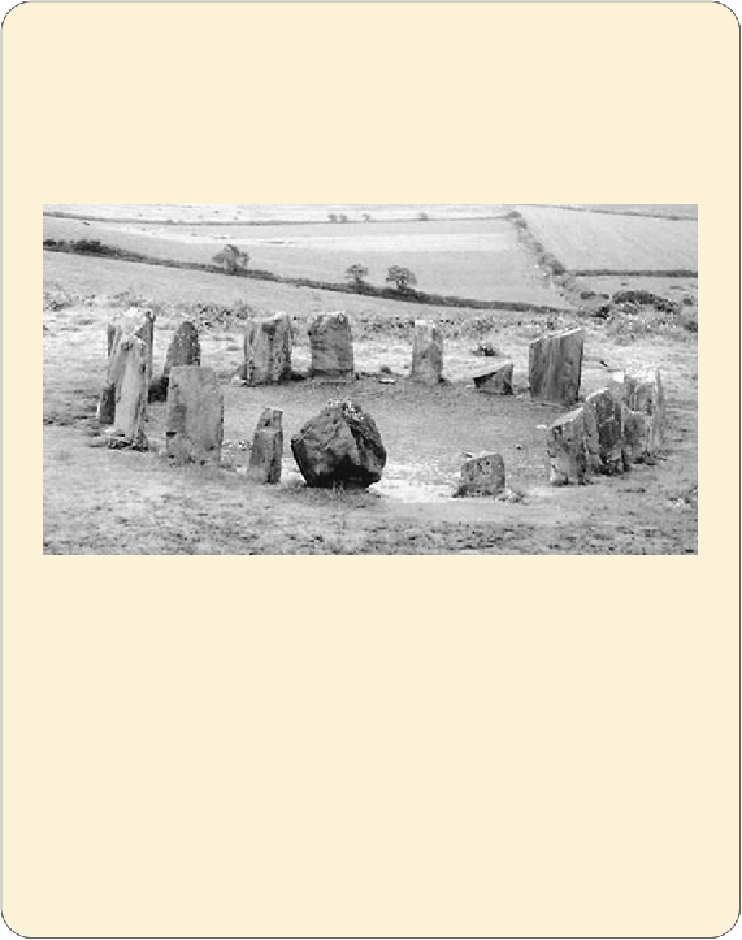Travel Reference
In-Depth Information
Stone Circles: The Riddle of the Rocks
Ireland is home to more than 200 evocative stone circles. These jaggedly sparse
boulder rings are rudimentary in comparison to Britain's more famous Stonehenge.
But their misty, mossy settings provide curious travelers with an intimate and ac-
cessible glimpse of the mysterious people who lived in Ireland before the arrival of
the Celts.
Bronze Age Ireland (2000-600
B.C.
) was populated by farming folk who had
mastered the craft of smelting heated tin and copper together to produce bronze,
which was used to produce more durable tools and weapons. Late in the Bronze
Age, many of these primitive, clannish communities also put considerable time
and effort into gathering huge rocks and arranging them into ceremonial circles
for use in rituals with long-forgotten meanings. Scholars believe that these circles
may have been used as solar observatories, to calculate solstices and equinoxes as
they planned life-sustaining seasonal crop-planting cycles. Archaeologists have dis-
covered a few ancient remains in the center of some circles, but their primary use
seems to have been ceremonial rather than as burial sites. And without any written
records, we can only make educated guesses as to their exact purpose.
In the Middle Ages, superstitious people believed that the stones had been ar-
ranged by an earlier race of giants. Later, some thought that at least one circle was
made up of petrified partiers who had dared to dance on the Sabbath. A nearby
standing stone was supposed to be the frozen figure of the piper who had been play-
ing the dance tunes.

